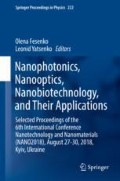Abstract
Magnetic resonance effect can induce double-strand breaks in DNA through induction of reactive oxygen species by the electromagnetic field. The aim of this paper is to study the possible use of the magnetic resonance effect for magnetic nanotherapy of Lewis lung carcinoma. The study was carried out on 40 C57Bl/6 mice bearing Lewis lung carcinoma. Animals were divided into four groups: (1) control (without treatment); (2) сonventional doxorubicin (DOXO) (Pfizer) administration; (3) administration of a mechano-magneto-chemically synthesized nanocomplex (MMCS) comprising ferromagnetic commercial nanoparticles <50 nm (Sigma-Aldrich) and paramagnetic DOXO; and (4) administration of the MMCS nanocomplex with following whole-body electromagnetic irradiation (EI) produced by a magnetic resonance tomography (MRT) system Intera 1.5T (Philips Medical Systems) in animals. Magnetic resonance imaging of magnetic nanocomplex (MNC) had slightly greater heterogeneity due to the presence of iron oxide nanoparticles. The combination therapy of MNC and EI by MRT had maximal antitumor effect and minimal of the average number of lung metastatic foci per mouse. The temperature inside the tumor reached 37°С. Electron spin resonance signal of Lewis lung carcinoma with g-factor of 2.25–2.42 indicating the presence of P-450 cytochrome was not detected among all investigated groups. This suggests the violation in electron transfer regulation of mitochondrial electron transport chain of tumor cells during anticancer therapy. The proposed hypothetical model of MNC action for magnetic nanotherapy is based on the well-known fact that various parameters of the external magnetic field can switch spin-controlled states of free radical pairs and modulate redox reactions in tumor and normal tissues.
Access this chapter
Tax calculation will be finalised at checkout
Purchases are for personal use only
References
Gobbo OL, Sjaastad K, Radomski MW et al (2015) Magnetic nanoparticles in cancer theranostics. Theranostics 5:1249–1263. https://doi.org/10.7150/thno.11544
Maier-Hauff K, Ulrich F, Nestler D et al (2011) Efficacy and safety of intratumoral thermotherapy using magnetic iron-oxide nanoparticles combined with external beam radiotherapy on patients with recurrent glioblastoma multiforme. J Neuro-Oncol 103:317–324. https://doi.org/10.1007/s11060-010-0389-0
Winter L, Oezerdem C, Hoffmann W et al (2015) Thermal magnetic resonance: physics considerations and electromagnetic field simulations up to 23.5 Tesla (1 GHz). Radiat Oncol 10:201. https://doi.org/10.1186/s13014-015-0510-9
Limbach LK, Wick P, Manser P et al (2007) Exposure of engineered nanoparticles to human lung epithelial cells: influence of chemical composition and catalytic activity on oxidative stress. Environ Sci Technol 41:4158–4163. https://doi.org/10.1021/es062629t
Thomas R, Park IK, Jeong YY (2013) Magnetic iron oxide nanoparticles for multimodal imaging and therapy of cancer. Int J Mol Sci 14:15910–15930. https://doi.org/10.3390/ijms140815910
Gworth WH, Todd CJ, Bell MI et al (2000) The diagnostic and therapeutic impact of MRI: an observational multicenter study. Clin Radiol 55:825–831
Emanuel N (1982) Kinetics of experimental tumor processes. Pergamon Press, Oxford
Jaffer H, Murphy KJ (2017) Magnetic resonance imaging-induced DNA damage. Can Assoc Radiol J 68:2–3. https://doi.org/10.1016/j.carj.2016.12.004
Orel VE, Shevchenko AD, Rykhalskiy AY et al (2015) Investigation of nonlinear magnetic properties magneto-mechano-chemical synthesized nanocomplex from magnetite and antitumor antibiotic doxorubicin. In: Fesenko O, Yatsenko L (eds) Springer proceedings in physics: nanocomposites, nanophotonics, nanobiotechnology and applications, vol 156. Springer Proceeding in Physics, Cham, pp 103–110. https://doi.org/10.13140/2.1.4251.2643
Matsuzaki T, Yokokura T (1987) Inhibition of tumor metastasis of Lewis lung carcinoma in C57BL/6 mice by intrapleural administration of Lactobacillus casei. Cancer Immunol Immunother 25:100–104. https://doi.org/10.1007/BF00199948
Li H, Calder CA, Cressie N (2007) Beyond Moran’s I: testing for spatial dependence based on the spatial autoregressive model. Geogr Anal 39:357–375. https://doi.org/10.1111/j.1538-4632.2007.00708.x
Shellock FG (2000) Radiofrequency energy-induced heating during MR procedures: a review. J Magn Reson Imaging 12:30–36. https://doi.org/10.1002/1522-2586(200007)12:1<30::AID-JMRI4>3.0.CO;2-S
Nicholls DG, Ferguson SJ (2002) Bioenergetics 3. Academic Press, London
Nelson DL, Cox MM (2008) Lehninger principles of biochemistry, 5th edn. W.H. Freeman and Company, New York
Woodward JR, Jackson RJ, Timmel CR et al (1997) Resonant radiofrequency magnetic field effects on a chemical reaction. Chem Phys Lett 272:376–382. https://doi.org/10.1016/S0009-2614(97)00542-3
Orel V, Tselepi M, Mitrelias T et al (2018) Nanomagnetic modulation of tumor redox state. Nanomedicine 14:1249–1256. https://doi.org/10.1016/j.nano.2018.03.002
Barnes FS, Greenebaum B (2015) The effects of weak magnetic fields on radical pairs. Bioelectromagnetics 36:45–54. https://doi.org/10.1002/bem.21883
Chen Y, Zhang H, Zhou HJ et al (2016) Mitochondrial redox signaling and tumor progression. Cancers (Basel) 8:40. https://doi.org/10.3390/cancers8040040
Sensenig R, Sapir Y, MacDonald C et al (2012) Magnetic nanoparticle-based approaches to locally target therapy and enhance tissue regeneration in vivo. Nanomed (Lond) 7:1425–1442. https://doi.org/10.2217/nnm.12.109
Author information
Authors and Affiliations
Editor information
Editors and Affiliations
Rights and permissions
Copyright information
© 2019 Springer Nature Switzerland AG
About this paper
Cite this paper
Orel, V. et al. (2019). Magnetic Resonance Nanotherapy for Malignant Tumors. In: Fesenko, O., Yatsenko, L. (eds) Nanophotonics, Nanooptics, Nanobiotechnology, and Their Applications. NANO 2018. Springer Proceedings in Physics, vol 222. Springer, Cham. https://doi.org/10.1007/978-3-030-17755-3_13
Download citation
DOI: https://doi.org/10.1007/978-3-030-17755-3_13
Published:
Publisher Name: Springer, Cham
Print ISBN: 978-3-030-17754-6
Online ISBN: 978-3-030-17755-3
eBook Packages: Physics and AstronomyPhysics and Astronomy (R0)

